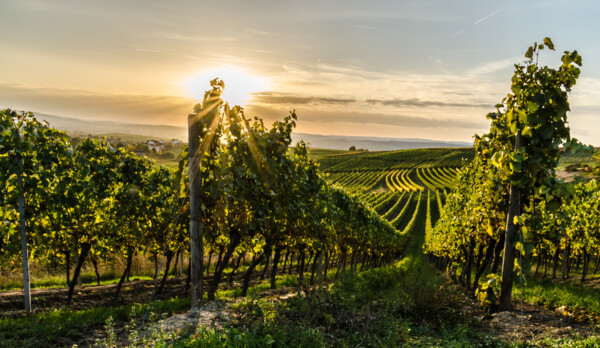Growing regions
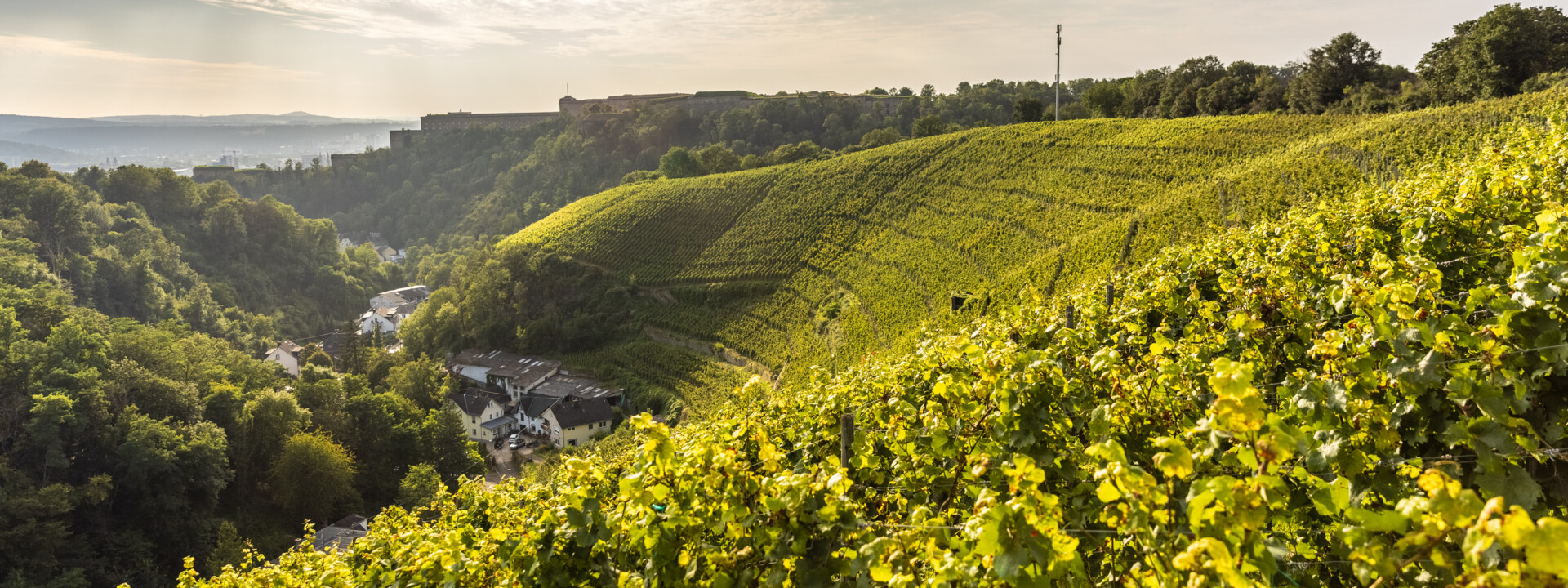
Koblenz
Moselle
Middle Rhine
Ahr
Rheinhessen
Wine City Koblenz
The Moselle and Middle Rhine wine-growing regions meet in Koblenz.One indication of the city's long wine history is the Roman Celtic stone, which lies in the middle of Koblenz, in the immediate vicinity of the town hall. In the Middle Ages, Koblenz's monasteries and convents were particularly prominent wine producers. In the 19th century, Koblenz developed into an important wine trading town, including the Deinhard wine and sparkling wine cellars.
In the suburbs of Ehrenbreitstein, Moselweiß, Güls and Lay, ten winegrowers work as their main occupation and several more as a sideline. The Koblenz winegrowers have formed a working group. In addition to exchanging experiences with colleagues, their aim is to help shape the city's culture, e.g. by participating in city festivals. There are a total of eight vineyards in the town. The main grape variety is Riesling. However, Müller Thurgau, Pinot Blanc and Pinot Gris, Pinot Noir, Dornfelder and white and red wine varieties are also cultivated.
Festival Wineries:
Weingut Karl LunnebachWeingut Spurzem
Weingut Toni Müller
Find out more about Weinstadt Koblenz
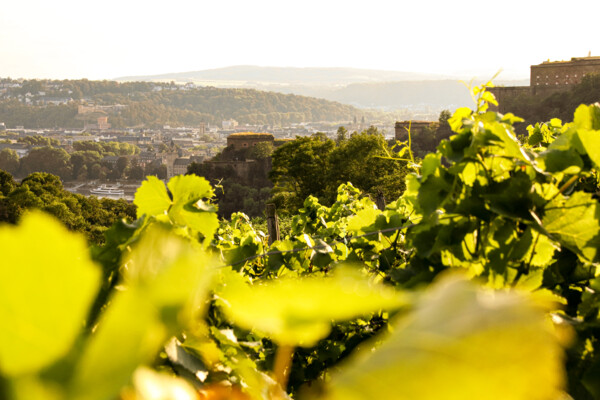
Moselle wine region
The Moselle is Germany's oldest wine region, as Celts and Romans were already planting vines here over 2000 years ago.The steep slopes of the river valleys are densely planted with vines, and the steep slopes characterize the region like hardly any other wine landscape in the world. In the area from Zell to Koblenz, the slopes are often so steep that the vines grow on narrow terraces fortified by dry stone walls.
The region is known for its excellent Riesling, incomparably fine, fruity white wines with an enormous depth of flavor and usually a mineral note. However, due to climate change, other grape varieties (e.g. Burgundy) are also increasingly being cultivated.
Festival Wineries:
Weingut Leo FuchsWeingut Edgar Comes
Weingut Daniel Theisen
Learn more about the Moselle wine region
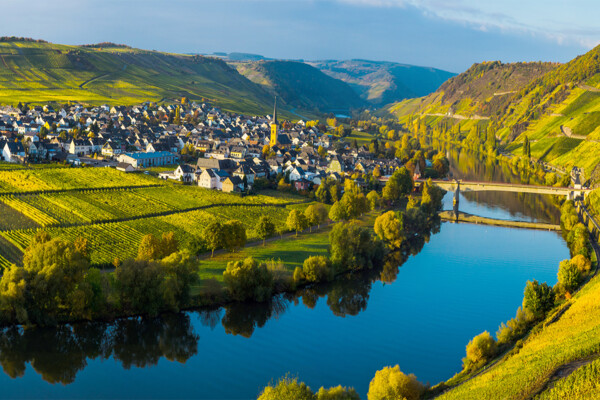
Middle Rhine wine region
The Middle Rhine is pure Rhine romance. The wine-growing region stretches over 120 kilometers - from Bingen to Bonn. Past steep vineyards, castles, fortresses and the world-famous Loreley, the river winds its way through a landscape steeped in history. The southern part of this unique cultural landscape was declared a UNESCO World Heritage Site in 2002. Koblenz, the city on the Rhine and Moselle, lies at the heart of the wine-growing region. Riesling in particular finds ideal growing conditions here. It is mineral, with a fine aroma and racy acidity. With 70 percent of the area under cultivation, it is the number one grape variety in the Middle Rhine region. Müller-Thurgau, Kerner and Burgundy also thrive here. The most important red grape variety is Pinot Noir.Festival Winery:
Scheidgen WineryFind out more about the Middle Rhine wine region
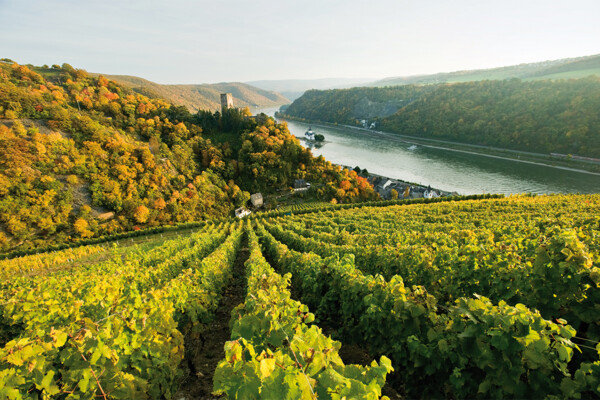
Ahr wine region
We AHR open - Still a long way from being finished. But open and happy about your visit!Reconstruction in the Ahr Valley continues apace. Thanks to dedicated hosts and numerous supporters, a large part of the tourist offer is already available again. Almost all wineries in the Ahr Valley have continued to operate after the flood disaster in July 2021 and new wine shops, wine cellars and tasting rooms are now opening almost daily in the Ahr Valley. The region is still scarred by the consequences of the flood and it will take some time to rebuild everything. However, the cultural landscape of the wine region is often untouched and beautiful.
Pinot Noir, the queen of grapes on the Ahr, was able to fully ripen on the vine, especially in the 2022 and 2023 vintages, and this special ripeness is already evident in the glass in the juicy and elegant wines.
Germany's small "red wine paradise" is on a steady, albeit rocky, path to new bloom.
Festival Wineries:
Winzergenossenschaft Mayschoß-Altenahr Weingut Burggarten
Weingut Oliver Schell
Find out more about the Middle Rhine wine region
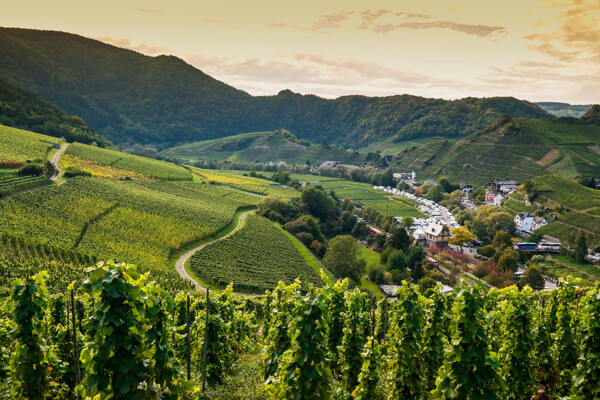
Rheinhessen wine region
Rheinhessen is Germany's largest wine-growing region and looks back on a long wine tradition dating back to Roman times.The gently rolling hills between Mainz, Worms and Bingen are characterized by wide vineyards that extend over loess soils and offer ideal conditions for viticulture. In contrast to the steep slopes of the Moselle, it is above all the open vineyards, spoiled by wind and sun, that give the wine its character. Rheinhessen is known for its impressive diversity of grape varieties - from fruity Riesling and aromatic Silvaner to modern Burgundy varieties.
In recent years in particular, the region has developed into a dynamic center for innovative wine styles thanks to a new generation of young, quality-oriented winegrowers. In addition to the classic white wine, red wine is also playing an increasingly important role.
Festival Wineries:
III FriendsFind out more about the Rheinhessen wine region.
